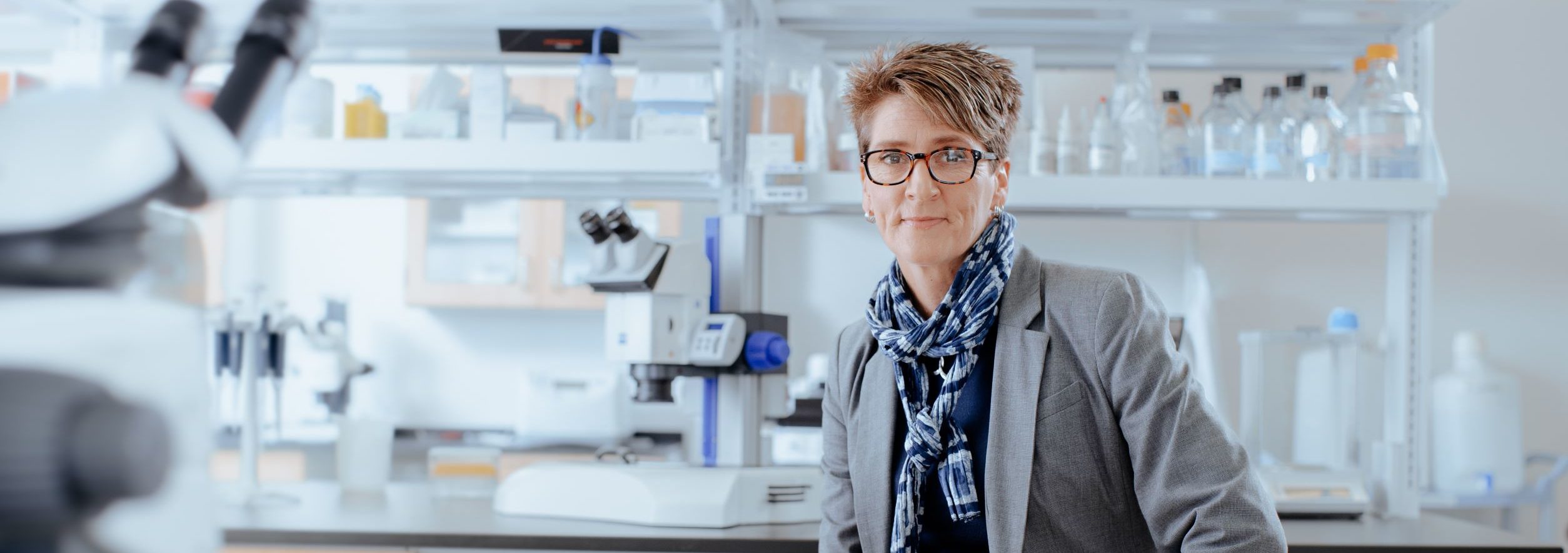by Buck Institute
February 14, 2023 . BLOG
Scientist Spotlight: Malene Hansen, PhD
 If Malene Hansen, PhD, could be described in a single word, that word might be “energetic.” The Buck professor was an avid sports enthusiast including as a volleyball player growing up in Denmark, a pastime that conveniently moved to the beach when her career took her to San Diego. Now that she lives in Novato, the Bay Area doesn’t readily support the beach volleyball vibe, but she manages to get her activity fix through mountain biking and running and in the local fitness center with a personal trainer.
If Malene Hansen, PhD, could be described in a single word, that word might be “energetic.” The Buck professor was an avid sports enthusiast including as a volleyball player growing up in Denmark, a pastime that conveniently moved to the beach when her career took her to San Diego. Now that she lives in Novato, the Bay Area doesn’t readily support the beach volleyball vibe, but she manages to get her activity fix through mountain biking and running and in the local fitness center with a personal trainer.
“I have always been a very sporty person and I very much apply the ideas of how to function as a competitive sports team to my lab,” she says, emphasizing how scientific research is very collaborative and how all team members contribute in their own ways to overall success. Beyond leading her research team, Hansen brings her dynamism to her administrative role as the Buck’s Chief Scientific Officer.
As a child, Hansen had an uncanny premonition of her future career as a scientist. When asked in the eighth grade to imagine her future, she wrote an essay complete with a detailed illustration of herself as a biochemist. “Ironically, that drawing was full of all the prejudices I had at the time: an old guy in a lab coat with a mouse and colored, bubbling chemicals.” Aided by an “outstanding biology teacher” who helped her explore what being a researcher as a young woman might actually entail, she overcame her unconscious biases of what a scientist is and created her own pathway.
Although no one else in her family had attended college or graduate school, Hansen was unwavering in pursuing her goal. She studied biochemistry at the University of Copenhagen, where she completed her masters and PhD degrees researching small GTPases, enzymes that play critical roles in normal cell function and contribute to cancer development.
Her current research focus began with getting hooked by a tiny worm. During her graduate studies, she spent a lot of time training in different laboratories in the United States, including one that used C. elegans, a transparent roundworm approximately 1 millimeter long. They only live for two weeks but ironically hold the answers to many of the questions about aging, as many of their genes have counterparts in humans.
“I remember looking through the microscope while this little worm laid an egg. After studying cell culture for my entire research life, here was this powerful movie occurring right before my eyes!” she says. She was enchanted.
Hansen’s focus shifted to joining the lab of Cynthia Kenyon, PhD, who discovered in the early 1990s that a single gene mutation can double the lifespan of healthy roundworms. In 2001, Hansen came as a postdoctoral fellow to Kenyon’s lab at UC San Francisco, telling her mother she would likely return to Denmark in three years.
More than two decades later, she’s still in the United States, arriving at the Buck in 2021.
Hansen’s lab uses C. elegans in addition to cultured cells to study how organisms age at the molecular level. The focus is on a cellular process called autophagy and how it is affected by aging. “Autophagy is quite similar to household recycling – the cell sorts its trash by packing it up in bags and shipping it to recycling centers where it is broken down for reuse elsewhere in the cell,” she says. “There are a number of ways that the intricate process can fail during aging and in disease, which is what we are actively studying to learn how we can improve the process.”
Beyond her enthusiasm for science, Hansen is passionate about mentoring, educating and training the next generation of scientists. “I love to help trainees move forward, not just in my own lab but others as well, and have a positive impact on their future,” she says. As Chief Scientific Officer, she has a number of “big visions” she intends to bring to the Buck, from nurturing researchers’ communication skills to fostering more translational research to creating an international hub for training and education in geroscience.
The breadth and magnitude of the work ahead energizes her. “It’s just my personality, I have to keep moving,” she says.

SHARE